How to Grow a Salsa Garden
This post may contain affiliate links, which means that I may receive a commission if you make a purchase using these links. As an Amazon Associate I earn from qualifying purchases.
Love salsa? Then, grow your own salsa garden with tomatoes, peppers, onions, and cilantro! Learn how to plant a garden full of fresh ingredients for salsa all summer long.
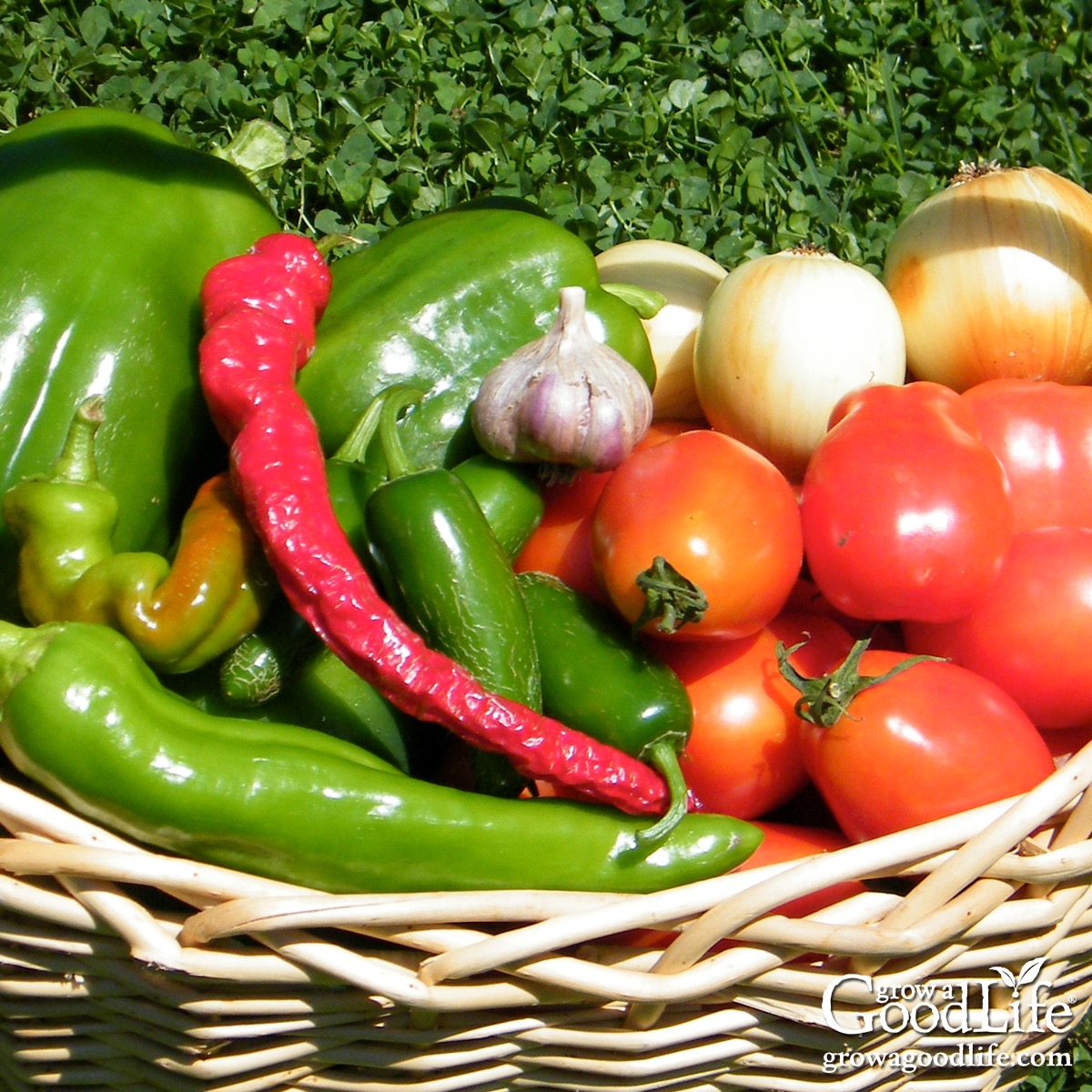
Few things are more satisfying than making fresh, homemade salsa with vegetables you’ve grown yourself. A salsa garden is a small, thoughtfully planned space dedicated to growing the key ingredients for salsa—tomatoes, peppers, onions, garlic, and cilantro—so you can enjoy garden-fresh flavors all season long.
Growing your salsa ingredients ensures the freshest taste, reduces grocery costs, and allows you to choose the varieties that best suit your flavor preferences, whether you like your mild and tangy salsa or bold and spicy.
In this guide, you’ll learn how to plan, plant, and care for a productive salsa garden, plus tips for using your homegrown ingredients in fresh and preserved salsas. Let’s get started!
How to Plan Your Salsa Garden
If you love fresh salsa, why not grow a garden dedicated to its ingredients? A well-planned salsa garden ensures you have a steady supply of tomatoes, peppers, onions, garlic, and cilantro throughout the season.
Choosing the Right Location
Start by selecting a location that receives at least six hours of direct sunlight daily. A 4×4-foot raised bed or square-foot garden is an efficient way to maximize space and yield.
To make the most of your growing area, add a trellis along the north side of the garden bed. This allows vining tomatoes to grow upward, keeping them off the ground while preventing them from shading smaller plants.
Preparing the Soil
Healthy soil is the foundation of a productive salsa garden. If you’re building a new raised bed, fill it with a blend of quality garden soil, compost, and organic matter to provide essential nutrients.
If planting an existing garden bed, remove any weeds and plant debris, and enrich the soil by mixing in finished compost or well-rotted manure before planting. A balanced organic fertilizer can also be added at planting time to give the plants a strong start.
Mapping Out Your Garden
Divide your raised bed garden into one-foot sections to make it easy to map out the growing area so you know where to plant everything in your salsa garden. Beginning at the back of the bed (north side):
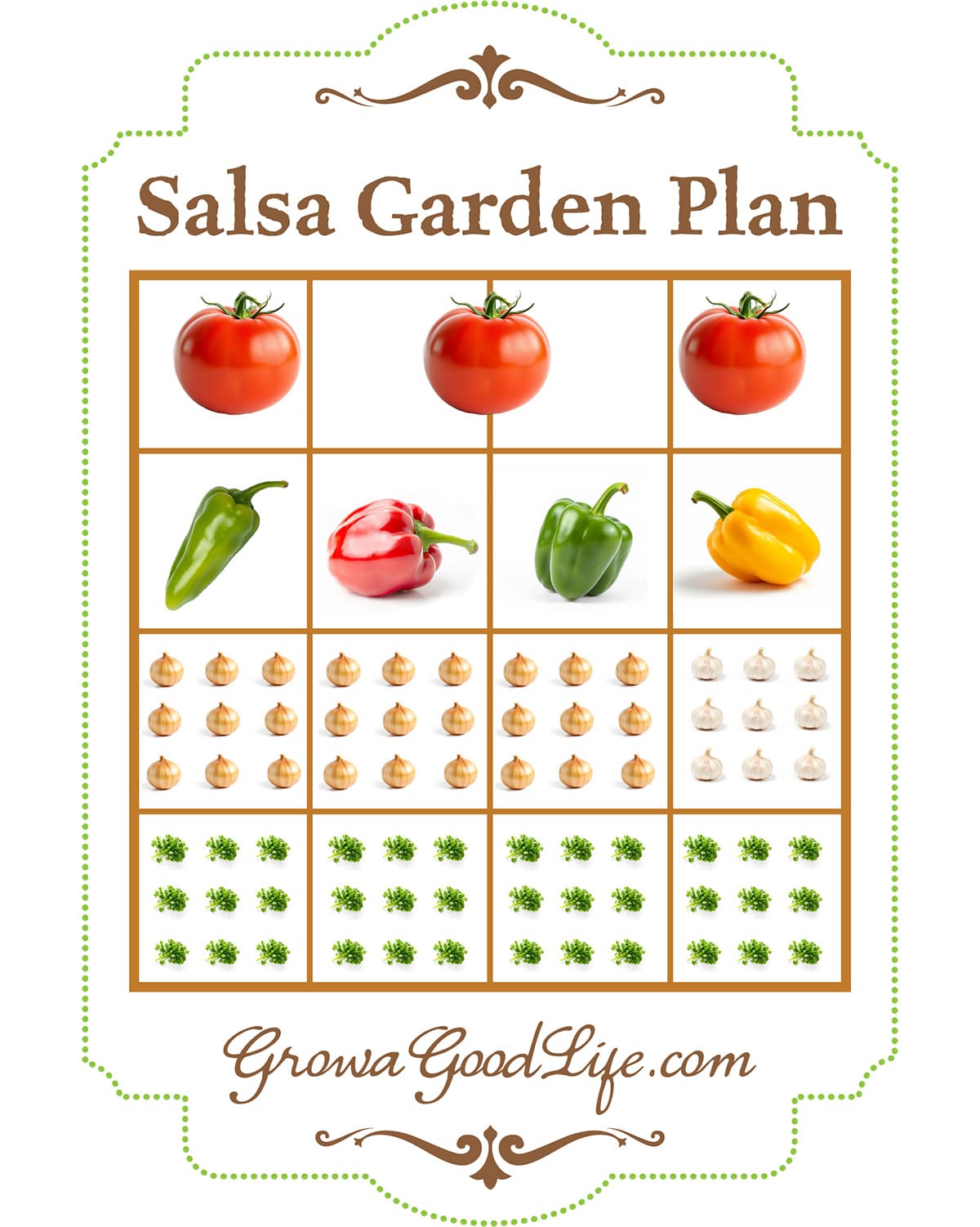
- Row 4 (Back): Three indeterminant tomato plants along the trellis.
- Row 3: Four pepper plants in front of the tomatoes (one per square foot).
- Row 2: Onions (9 per square foot) and garlic (fall-planted: 6 per square foot, spring-planted: 9 per square foot)
- Row 1 (Front): Cilantro (9 per square foot)
If you love salsa verde, consider replacing one of the tomato plants with two tomatillo plants. Two plants are needed for cross-pollination and will provide you with lots of tomatillos for fresh salsa verde. Space the tomatoes and tomatillos out evenly along the trellis, one per square foot.
By following this layout, you’ll have a compact yet productive garden designed specifically for salsa-making.
Starting Your Plants
You can start your tomatoes, peppers, and onions from seed indoors under grow lights, or purchase transplants from a local garden center at planting time. If starting from seed, plant indoors:
- Tomatoes: 6 to 8 weeks before your last frost date
- Peppers: 8 to 10 weeks before your last frost date
- Onions: 10 to 12 weeks before your last frost date
Garlic cloves, onion sets, and cilantro seeds can be sown directly into the garden. Garlic is typically planted in the fall for larger bulbs, but spring planting is also an option. To maintain a continuous supply of cilantro, sow new seeds every three weeks throughout the growing season.
What to Grow in Your Salsa Garden
A great salsa starts with fresh, flavorful ingredients. The essential components of a salsa garden include tomatoes, peppers, onions, garlic, and cilantro—all of which are easy to grow with the right care.
Tomatoes
Tomatoes are the foundation of any good salsa. Indeterminate tomato plants grow very tall and produce their fruit over a period of time. Three tomato plants planted on the north side of the garden bed along the trellis will provide plenty of tomatoes for salsa beginning mid-summer until frost.
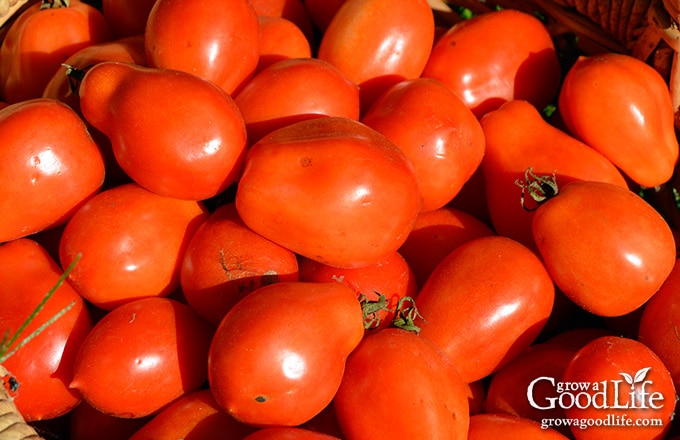
Choose meaty, low-moisture types of tomatoes that offer rich flavor without making your salsa watery. My favorite oblong shaped plum or paste tomatoes include:
- Roma – Classic paste tomato with firm flesh
- San Marzano – Rich, sweet flavor, perfect for salsa and sauces
- Juliet – Small, elongated tomatoes with a dense texture
- Amish Paste – Great balance of sweetness and acidity
Purchase transplants from your local nursery or garden center or grow from seed. Transplant hardened-off seedlings into the garden after all danger of frost has passed. Plant 16 inches apart along the north end of your garden in front of the trellis. Tie the vines to the trellis as the plant grows. Prune out lower branches to aid in air circulation. Water regularly if rainfall is scarce. Plants need about 1 inch of water weekly once they are actively growing.
➡ More tips: How to Grow Tomatoes
Peppers
Do you like your salsa mild or hot? For a spicy salsa, select varieties of chili peppers such as jalapenos, serranos, or habaneros. If you prefer milder salsa, mix bell peppers with a mildly hot pepper like Anaheim. Four different pepper plants will allow you to mix, match, and experiment with various salsa spice.
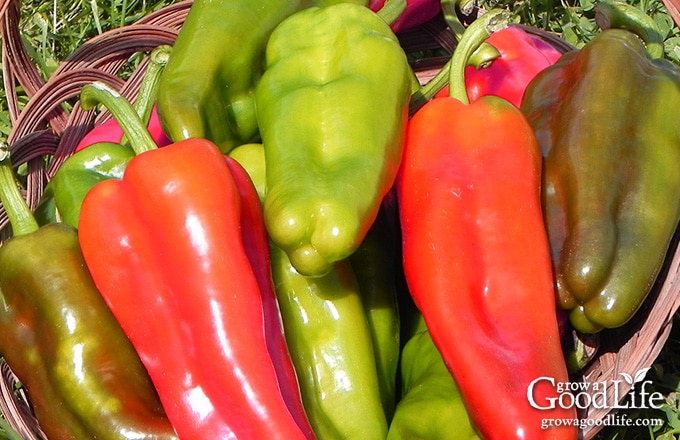
Whether you prefer a mild salsa or one with a fiery kick, growing a mix of sweet and spicy peppers lets you customize your flavor. Consider these varieties:
- Mild options: Bell, Sweet Banana, Cubanelle
- Medium heat: Anaheim, Poblano, Chilaca (Pasilla)
- Hot and spicy: Jalapeño, Serrano, Cayenne
- Super hot: Habanero, Bird’s Eye, Ghost Pepper (Bhut Jolokia)
Transplant hardened-off pepper seedlings into the garden after all danger of frost has passed. Plant in front of your tomatoes, one per squareor spaced 12 inches apart. Support them with small tomato cages to prevent breakage. Peppers need consistent watering (about 1 inch per week) to prevent stress and bitterness.
➡ More tips: How to Grow Peppers
Onions
Red onions, white onions, and yellow onions all work well for making salsa. Onion flavors range from sweet to pungent. Start from seed, purchased transplants, or plant onion sets (small bulbs) found at garden centers in the spring.
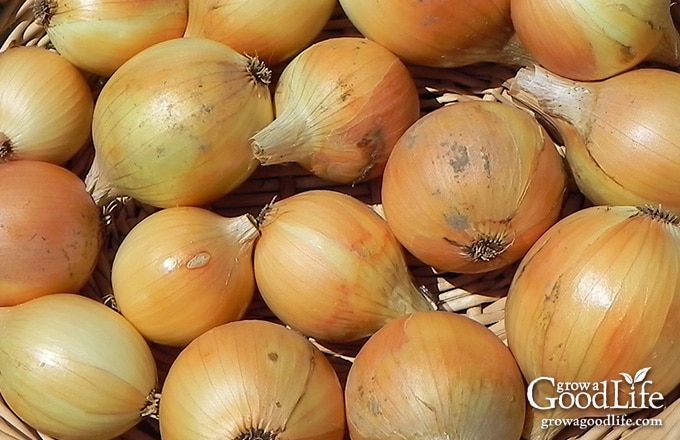
Select onion varieties that grow well in your area, including:
- Sweet onions: Spanish, Vidalia, Walla Walla
- Pungent onions: Red Creole, Copra, Stuttgarter
Plant hardened off seedlings, dormant transplants, or onion sets in early spring when the ground is workable. Space onions 4 inches apart or 9 per square foot.
Onion sets are convenient and usually sold in bulk by the pound. They come in yellow, white, or red. Grab a handful of each for some variety of flavor and color. Store extra onion sets in a cool, dark location and plant whenever a spot opens up.
➡ More tips: How to Grow Onions
Garlic
Garlic adds depth to salsa and is easy to grow. Garlic is usually planted in the fall for larger bulbs, but it can be planted in the spring as soon as the ground can be worked. The spring-grown bulbs will be smaller but will taste the same.
- Fall-planted garlic: 6 per square foot
- Spring-planted garlic: 9 per square foot
You can find garlic bulbs for planting at your garden centers or order online.
➡ More tips: How to Grow Garlic
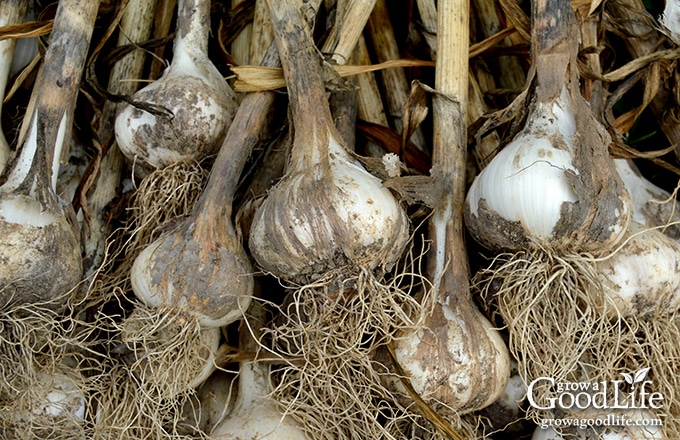
Another option to add garlic flavor to your salsa is to purchase a garlic chive plant from your garden center. Chopped garlic chives will add a nice, mild garlic flavor to your salsa and will make a great addition to your salsa garden.
Cilantro
Cilantro adds a nice, fresh zing to salsa. It matures quickly, especially in warm weather. To keep a continuous supply of cilantro available for your fresh salsa, grow a slow bolt variety, such as Cilantro Long Standing, and plant cilantro seeds every 3-weeks.
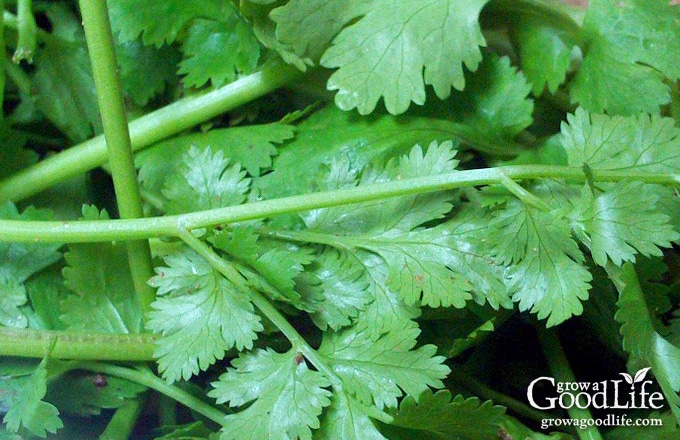
Direct sow cilantro seeds in one square, 4 inches apart, or 9 per square foot. Cover seeds with 1/2-inch of soil and keep moist. Sow another round in the next square 3 weeks later, then the next 3 weeks after that, and then the next. Keep rotating and this will maintain a steady supply of fresh cilantro growing and ready for harvest for your salsa.
➡ More tips: How to Grow Cilantro
By growing these key ingredients, you’ll have everything you need for fresh, homemade salsa straight from the garden!
Caring for Your Salsa Garden
Once your salsa garden is planted, regular care will ensure a productive harvest all season long. Here are key tasks to keep your plants healthy and thriving.
Watering
Consistent watering is important, especially during dry spells. Most salsa garden crops—tomatoes, peppers, onions, garlic, and cilantro—need about 1 inch of water per week, either from rainfall or irrigation. Water deeply at the base of plants rather than overhead to reduce the risk of disease. Mulching with straw or shredded leaves will help retain moisture and suppress weeds.
Feeding Your Plants
Healthy soil provides most of the nutrients your plants need, but a little extra boost can improve growth and yields:
- Tomatoes and Peppers: Apply a balanced organic fertilizer or water with fish emulsion liquid fertilizer every few weeks. Once flowers appear, switch to a fertilizer with lower nitrogen and higher phosphorus, and potassium to support fruit development.
- Onions and Garlic: These crops benefit from a nitrogen-rich feeding in early growth stages but require little fertilizer as bulbs mature.
- Cilantro: A light feeding of fish emulsion liquid fertilizer every few weeks will encourage steady growth.
Managing Weeds
Weeds compete for nutrients and water, so keep them in check by applying a layer of organic mulch to suppress weed growth and hand-pulling any that appear. Avoid digging near onions and garlic, as their shallow roots can be disturbed easily. Instead, clip these weeds with pruning shears so they don’t grow and go to seed.
Pest and Disease Prevention
With regular care, your salsa garden will provide a steady harvest of fresh ingredients for homemade salsa all season long! A few simple practices will help keep your garden healthy:
- Inspect plants regularly for signs of pests like aphids, hornworms, or flea beetles. Hand-pick pests when possible or use insecticidal soap if necessary.
- Encourage beneficial insects by planting flowers nearby to attract pollinators and natural predators like ladybugs and lacewings.
- Rotate crops each year to prevent soil-borne diseases.
Using Your Salsa Garden Harvests
By mid to late summer, your salsa garden will be bursting with fresh, homegrown ingredients—ripe tomatoes, crisp peppers, pungent onions, garlic, and fragrant cilantro—all ready to be transformed into delicious homemade salsas.
Whether you prefer enjoying salsa fresh or preserving its vibrant flavors for later, here’s how to harvest your ingredients at their peak, along with recipes to help you make the most of your garden’s bounty.
When to Harvest Your Salsa Ingredients
Harvesting at the right time ensures the best flavor and texture for your homemade salsa.
- Tomatoes: Pick when fully ripe for the best flavor, or harvest once they start to blush and let them finish ripening indoors.
- Peppers: Harvest green for a crisp, mild taste, or leave them on the plant to ripen fully and develop deeper flavor and heat.
- Onions and Garlic: Pull at any stage—young for a milder taste or fully mature for long-term storage.
- Cilantro: Snip fresh leaves as needed to keep a steady supply throughout the season.
Whether you enjoy it fresh or want to preserve the flavors for later, below are some great ways to use your harvest:
Fresh Salsa Recipes
Nothing beats the taste of freshly made salsa, bursting with homegrown flavor. Use your just-picked tomatoes, peppers, onions, garlic, and cilantro to create vibrant salsas that pair perfectly with chips, tacos, grilled meats, and more. Try these fresh salsa recipes:
- Garden Fresh Salsa: A classic, chunky salsa with the perfect balance of tomatoes, peppers, onions, and cilantro.
- Grilled Tomato Salsa: Roasting tomatoes on the grill adds a smoky depth of flavor to this fresh salsa.
Preserving Your Harvest
If your harvest is overflowing, preserving salsa is a great way to enjoy those homegrown flavors all year. Canning salsa ensures you have delicious homemade options even in the colder months. Try these salsa canning recipes:
- Tomato Jalapeño Salsa: A medium-heat salsa with fresh tomatoes, onions, jalapeños, and lime juice, perfect for canning and year-round enjoyment.
- Restaurant-Style Salsa: A smooth and flavorful salsa inspired by your favorite Mexican restaurants, ideal for dipping or spooning over tacos.
- Fire Roasted Salsa Canning Recipe: Smoky, fire-roasted tomatoes and peppers give this salsa a rich depth of flavor, great for preserving.
No matter how you choose to enjoy your salsa garden harvest, these recipes will help you savor the flavors of homegrown goodness long after the growing season ends!
———
With just a small plot, a little planning, and some care, you can harvest all the ingredients for homemade salsa. Growing your own salsa garden lets you control the ingredients and experiment with the spiciness.
Now that you know how to plant, grow, and use your salsa garden harvest, it’s time to get started! Choose your favorite varieties, map out your garden space, and enjoy the flavor of homegrown salsa made from scratch.
Note: This article was originally published in March 2015 and has been updated in 2025 with expanded planting tips and salsa recipes to help you make the most of your salsa garden.
You May Also Like:
- Vegetable Garden Planning: Choosing Vegetables to Grow
- 3 Ways to Preserve Peppers
- Homemade Taco Seasoning Recipe
- Homemade Flour Tortilla Recipe
Good planning is key to a successful vegetable garden
Whether you are new to growing your own food or have been growing a vegetable garden for years, you will benefit from some planning each year. You will find everything you need to organize and plan your vegetable garden in my PDF eBook, Grow a Good Life Guide to Planning Your Vegetable Garden.


Great post, but wouldn’t you need two or more tomatillo plants if you want tomatillos? From what I know they don’t self-pollinate
Tyler, Yes, you are correct….you do need two or more tomatillo plants for pollination. Thanks for your comment. I have removed tomatillos from the article.
I’m about to plant my first salsa garden and am so ecstatic! I go through jars of salsa like they’re water, so very ready to make my own. Thanks for the article, very helpful.
Great post! I plant a salsa garden too. I chose you as one of my favorite posts from the April Country Fair Blog Party. Hope you sign up again for May’s Celebration blog hop.
I have trouble with onions here in Virginia! I keep trying though, but can’t figure it out! Thanks for sharing all this over at Country Fair Blog Party! Please come back in May and keep us posted on what you are up to!
Jan, Be sure to check out my post on Growing Onions from Seed (https://growagoodlife.com/how-to-grow-onions-from-seed/). There are some tips for selecting onions that grow in different areas.
My family is full of salsa fiends, but I’ve actually never tried making my own! Your recipe sounds delicious and I might have to give it a try. Hopefully my tomato plants will actually grow this year!
Thanks so much for sharing this at Savoring Saturdays – I’m going to feature it at this weekend’s party – I hope you’ll come back and share with us again!
Hi Rachel – Thanks for sharing this with the Let’s Get Real party. We have pinned it to our group board, and it will be my featured post at this week’s party.
Hi Rachel,
Just a note to let you know that I have chosen your post as one of my features for this weeks Real Food Fridays blog hop that goes live on Thursday @ 7pm EST. Thank you for being part of Real Food Friday and sharing your wonderful post.
Hi Rachel,
Hooray for Salsa! What a delicious way to spice up Spring! Thank you for sharing this wonderful salsa garden and salsa recipe with us at the Healthy, Happy, Green and Natural Party
Blog Hop! I’m pinning and sharing!
Hi Rachel,
Great information and instructions. Thanks for sharing Real Food Fridays. PInned & twitted